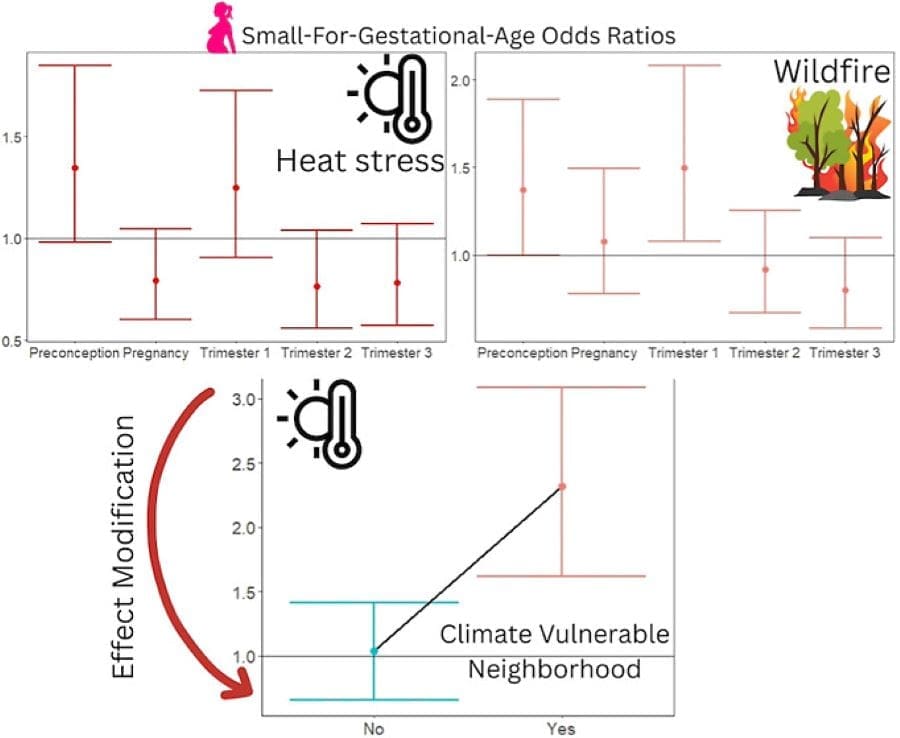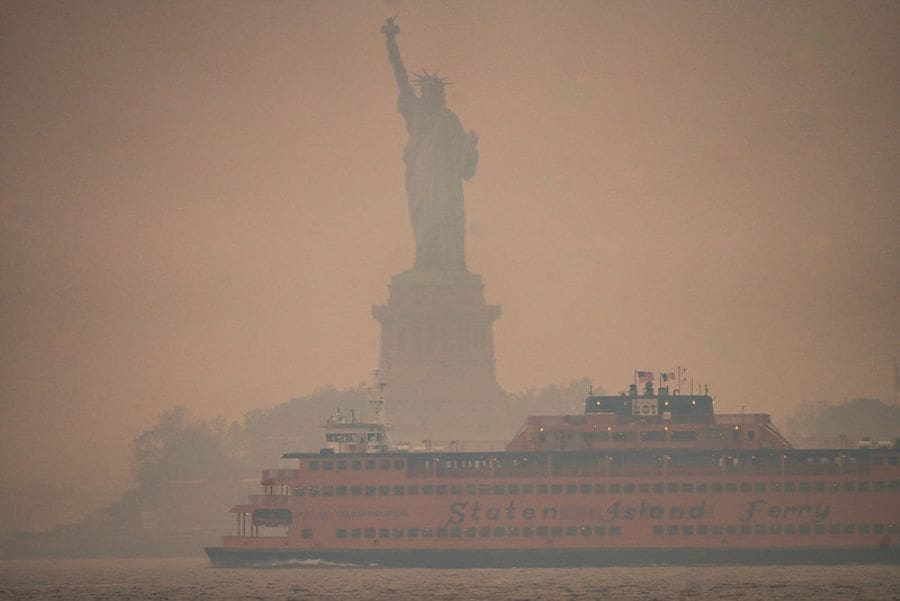Explore the latest insights from top science journals in the Muser Press daily roundup (June 23, 2025), featuring impactful research on climate change challenges.
In brief:
Shifting from quantity to quality in climate adaptation finance to create real impact
The quantity of adaptation finance has been a controversial political issue, and a critical negotiating point for developing countries in international climate negotiations. At the United Nations climate conference (COP29) in Baku last year, developed countries agreed to provide more money for climate adaptation in emerging market and developing economies. “But it is not only the amount of money that counts. At present, we have no evidence whether the existing finance distributed has been effective, and what we are actually trying to achieve with this finance in terms of climate risk reduction,” says Verschuur.

Capacity building
“Despite good intentions and skilled people dedicated to adaptation, the lack of impact is in part due to the wrong incentives being in place.” There is strong tendency now to focus on increasing adaptation finance commitments by adding adaptation components to existing and planned development projects. At the same time, we have considerably less focus on programmes that help build capacity, making necessarily policy changes, and put countries in charge of their own adaptation plans. But without the latter, adaptation will simply not be impactful.
Measures to reduce CO2 emissions are often universally applicable. Climate adaptation measures, on the other hand, are heavily influenced by regional circumstances, such as agricultural needs, the local economy, and regional stakeholders. For climate adaptation to be truly effective, initiatives should originate from the countries themselves. Looking at climate adaptation in the Netherlands: the Dutch Delta Works are more than just dikes — they are the product of a deeply rooted policy culture. We should create such culture to emerging countries that face climate risks.
Urgent shift is necessary
Verschuur: “We provide five recommendations to improve adaptation programs and projects throughout the design cycle with adaptation finance, and the role of science to facilitate this. These recommendations range from improving risk identification to planning, monitoring and creating an enabling environment for finance to be impactful.
“Eventually, all five recommendations rely upon much strengthened capacity building efforts within governments, economic sectors, and communities. Verschuur: ‘Instead of the piecemeal capacity building efforts currently done, we urgently call for large-scale, coherent, efforts to enhance capacity. The next COP in Belem this October could be a good starting point for this discussion.”
Journal Reference:
Jasper Verschuur, Nicola Ranger, & Jim. W. Hall, ‘Climate adaptation finance: From paper commitments to climate risk reduction’, Science eadx1950 (2025). DOI: 10.1126/science.adx1950
Article Source:
Press Release/Material by Delft University of Technology
The Barents Sea system – gateway to the changing Arctic
Roughly 300 scientists, students and technicians from ten Norwegian research institutions worked together in a six-year national effort to investigate the Barents Sea. The Nansen Legacy research project, which ran from 2018-2024, involved biologists, chemists, technologists, physicists, historians and cyberneticists working side by side.
Their interdisciplinary collaboration relied on a number of new methods to carry out a thorough survey of the environment in the Barents Sea management plan area.

The research results from this huge national effort are collected in the new book The Barents Sea system – gateway to the changing Arctic. Geir Johnsen, a professor of biology at the Norwegian University of Science and Technology (NTNU) is one of the book’s three editors.
“The most important thing in this major research project is interdisciplinarity. We work closely together across disciplines, and we work well with each other,” Johnsen said.
The researchers believe the book will be an important contribution to knowledge-based management of this important international resource.
Autonomous vehicles played key role
The researchers deployed instruments in the skies, on the sea surface, under sea ice, in the water column and on the seabed. These different platforms could collect data simultaneously, providing a nearly real-time understanding of what was happening in a specific place.
“Instrument-carrying robot platforms have made it possible to carry out scientific investigations in a very efficient way,” says Johnsen.
The researchers used flying drones, small satellites, autonomous boats and underwater robots that could be fitted with hyperspectral cameras.
This type of camera can capture very precise images of large areas, making it possible to see nuances in the colour of the sea surface that can help researchers assess algae blooms, as one example.
The robots are also equipped with sensors that measure temperature and light, as well as acoustic meters and water samplers.
The Observational Pyramid
Researchers called this combination of observational tools the Observational Pyramid. It allows researchers to scan the ocean from sky to seabed, collect water samples and perform various tests in the same area at the same time.
“The observation pyramid looks at phenomena in time and space and collects data at many different levels. We get 100 times more information compared to only information from research vessels,” Johnsen said.
“The method can be scaled up and down: With the help of satellites, we can map areas of several hundred thousand square kilometers. And we can also zoom in on details and examine a drop of water or a cell,” he said.
Why the Barents Sea?
The Barents Sea contains many mysteries and unanswered questions, yet it is a critical area for marine resources, geopolitics and shipping.
The Arctic is becoming increasingly ice-free, and it is precisely in the Barents Sea that the melting of sea ice is most noticeable, including with the greatest temperature increases. That makes the Barents Sea an important place for tracking environmental trends and climate change.
The researchers have studied the past and present climate and ecosystem in the Barents Sea. These data enable researchers to make better predictions about future changes and offer important information for being able to manage resources in the best possible way.
“Other sea areas in the Arctic are likely to experience similar changes as we are seeing in the Barents Sea now. This knowledge base and the book will be an important resource for understanding changes that are taking place in the ocean,” Johnsen said.
Article Source:
Press Release/Material by Norwegian University of Science and Technology (NTNU)
Decline in population data collection threatens global public policy
In a Policy Forum, Jessica Espey and colleagues argue that waning support for accurate collection and curation of population data worldwide threatens to compromise crucial evidence-based government planning. “We live in an era of seemingly unlimited data, where our digital activities may generate nearly constant information streams, yet some of our most essential infrastructure – demographic information – is deteriorating, introducing known and unknown bias into decision-making,” write the authors.
Accurate population data are fundamental to effective governance. Most countries rely on national censuses, which are traditionally conducted every 10 years, to supply this information. But according to Espey et al., fewer nations are completing censuses, and many are undercounting marginalized populations. For example, at the close of the 2020 census cycle, 204 countries or territories – encompassing 85% of the world’s population – had conducted at least one census between 2015 and 2024.
Yet by July 2024, 24 of these, representing roughly one-quarter of the global population, had not published their findings. This reflects a significant decline from the 2010 round, when 214 countries conducted and released census data, encompassing 93% of the global population. Moreover, even when censuses are carried out, they increasingly suffer from declining response rates and growing coverage errors – particularly in the undercounting of vulnerable populations such as ethnic minorities and young children. In the United States, for instance, the 2020 census likely missed nearly 3 million Latino individuals and close to 1 million children under the age of five.
In this Policy Forum, the authors outline several reasons for this general decline: eroding trust in institutions, COVID-19 disruptions, budget cuts to statistical offices, and collapsing international support for data collection programs. In order to address this “quiet crisis,” Espey et al. suggest adopting register-based systems, harnessing geospatial technologies and AI, and producing small-area population estimates. However, technical innovations alone are not enough, note the authors; governments must also restore public trust by showing how data informs daily life, ensuring strong privacy protections, and promoting collaboration across sectors.
“In an era of growing challenges, from climate change to economic inequality, accurate population data are not a luxury – they are essential infrastructure for healthy, resilient, functioning societies,” write the authors.
Journal Reference:
Jessica M. Espey, Andrew J. Tatem, and Dana R. Thomson, ‘Disappearing people: A global demographic data crisis threatens public policy’, Science 388, 1277-1280 (2025). DOI: 10.1126/science.adx8683
Article Source:
Press Release/Material by Walter Beckwith | American Association for the Advancement of Science (AAAS)
New USC study links wildfire smoke exposure and heat stress to adverse birth outcomes
Exposure to wildfire smoke and heat stress can negatively affect birth outcomes for women, especially in climate-vulnerable neighborhoods, according to a recent study led by USC postdoctoral researcher Roxana Khalili, PhD. The investigation, just published in Environmental Science & Technology, is one of the first to show that living in areas more susceptible to the harmful effects of climate-related exposures can significantly alter the effects of heat stress on adverse birth outcomes, even among women exposed to these conditions in the month before becoming pregnant.
“We already know that poor air quality is associated with adverse health outcomes and that pregnant women and fetuses are especially vulnerable,” said Khalili, a researcher in the department of population and public health sciences at the Keck School of Medicine of USC and lead author of the study. “Our knowledge about the specific effects of wildfire smoke during pregnancy has been limited. We know even less about the impact of these hazards right around or before conception.”

Khalili worked alongside Rima Habre, director of USC’s CLIMA Center to explore the associations between exposure to wildfire smoke and heat stress on infant health. They used data from the MADRES cohort (Maternal and Developmental Risks from Environmental and Social Stressors), an ongoing study of pregnant women in Los Angeles.
“Where you live makes a difference in your health,” said Khalili. “So does the timing of your exposure during or immediately before pregnancy. We wanted to better understand how these risks might differ for women who lived in neighborhoods that experience more climate related stressors and have fewer resources to deal with them.”
Measuring exposure
The research team examined 713 births among MADRES participants between 2016 and 2020. They used data from CalFIRE (California Department of Forestry and Fire Protection) to identify the location, size, and duration of every wildland fire in southern California during the study period. They used the NOAA hazard mapping system to calculate the smoke density from each fire and applied sophisticated modeling methods to calculate ground-level smoke concentrations, estimating how much particle pollution – tiny droplets of black carbon, soot, and burned vegetation – the women in the cohort were exposed to during these events based on their daily residential location histories.
Heat stress is another risk factor for pregnant women and fetuses, partly because pregnancy impedes a woman’s ability to regulate body temperature. To measure heat stress exposures in study participants, Khalili and her colleagues used meteorological data documenting the daily temperature, relative humidity, and wind speed. They also factored in a separate measurement that takes into account sun angle and cloud cover to gauge heat stress in direct sunlight, providing a better measure of how hot a given day feels when outdoors.
Next, the team pinpointed those LA neighborhoods that are most vulnerable to climate risks with mapping data from the California Urban Heat Island Index and the US Climate Vulnerability Index, two geospatial tools that analyze and map layers of data. These tools allow researchers to conduct deeper, more nuanced analyses that better assess the cumulative impacts of factors ranging from excessive heat and wildfire smoke to socioeconomic conditions.
Where there’s smoke…
The researchers found that greater exposure to wildfire smoke and excessive heat during the month before conception and the first trimester of pregnancy was associated with greater odds of having a small-for-gestational-age (SGA) baby. An infant is considered SGA if their birth weight is below the 10th percentile of their expected weight based on their gestational age. SGA places an infant at greater risk of health problems, from immediate complications at birth such as low oxygen levels to long-term challenges, including potential metabolic, cognitive and neurodevelopmental impairments.

The team also found an association between pregnant women exposed to moderate smoke-density days in the first trimester and having a low-birth-weight baby, or an infant weighing less than five pounds, eight ounces. Like SGA, low birth weight is linked to an array of potential health problems, both short and long term.
“Overall, we found consistent associations between increased exposure to wildfire smoke and heat stress during preconception and the first trimester with the odds of having an SGA infant,” Khalili said.
The study also suggested that living in a climate-vulnerable neighborhood could increase the odds of an SGA birth, particularly for women exposed to heat stress during preconception. For women living in the most climate-vulnerable neighborhoods, the study showed the effect of heat stress during preconception on the likelihood of an SGA birth almost doubled.
Khalili and her colleagues also found that Fenton Z-scores, which measure how much an infant’s size deviates from the average for their age, significantly decreased with more days of wildfires experienced during pregnancy. These findings are particularly relevant given the longer-lasting fire events that Los Angeles experienced in January 2025 and that many cities across the US are currently facing.
“Understanding what’s happening to women during wildfires and excessively hot days could help us identify protective measures, develop guidance, and plan interventions,” said Khalili.
Given how frequent and long California’s wildfire seasons are expected to become, such interventions are urgently needed. But these need to go beyond simple measures an individual can take – like staying indoors, running air filters or air conditioners – to truly understanding and addressing what makes a community more resilient to these impacts.
Habre, who developed and oversaw the project, agrees that the study breaks new ground – and also that more holistic, actionable research is needed.
“As the recent Los Angeles fires have demonstrated, infrastructure, socioeconomic, and health vulnerabilities can combine with excessive climate and environmental factors to magnify health risks,” said Habre. “It is only by looking at the cumulative impacts of burdens communities are facing, now and into the future, that we can start to truly quantify health risks of climate hazards and target interventions to strengthen community resilience.”
Journal Reference:
Roxana Khalili, Yisi Liu, Yan Xu, Karl O’Sharkey, Nathan Pavlovic, Crystal McClure, Fred Lurmann, Tingyu Yang, Xinci Chen, Mario Vigil, Brendan Grubbs, Layla Al Marayati, Deborah Lerner, Nathana Lurvey, Carmen J. Marsit, Jill Johnston, Theresa M. Bastain, Carrie V. Breton, Shohreh F. Farzan, and Rima Habre, ‘Adverse Birth Outcomes Associated with Heat Stress and Wildfire Smoke Exposure During Preconception and Pregnancy’, Environmental Science & Technology (2025). DOI: 10.1021/acs.est.4c10194
Article Source:
Press Release/Material by Stacia Pelletier | Keck School of Medicine of USC
Featured image credit: Gerd Altmann | Pixabay




